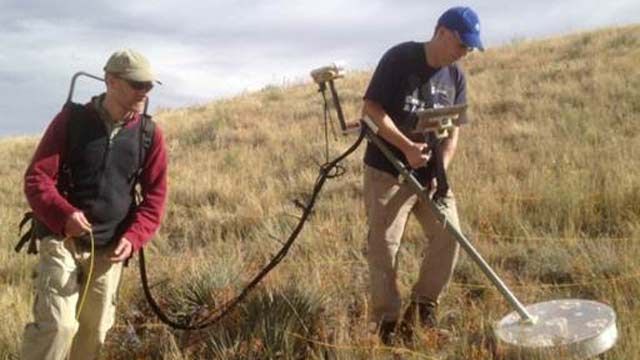Black Tusk Geophysics Detects and Classifies Unexploded Ordnance
“With MATLAB we have the ability to optimize algorithms for nonlinear data fitting and the flexibility to create user interfaces that display complex information in a clear way. This combination is a real strength of our solution.”
Challenge
Solution
Results
- Up to 50% cost savings with 86% reduction in digs
- Complex data analyzed and understood
- Calculation time cut by almost 75%

In North America, artillery and bombing training sites are littered with unexploded ordnance (UXO) buried just below the surface. UXO from decades-old military campaigns is also widespread in Europe and Southeast Asia. To ensure the safety of civilian populations, governments worldwide are stepping up efforts to find and remove UXO.
Conventional metal detectors are typically unable to distinguish UXO from harmless shrapnel and other metallic debris. A large number of excavations—sometimes numbering in the thousands—is required to unearth all metal identified with these detectors.
To reduce excavation costs, researchers at Black Tusk Geophysics use MATLAB® to accurately classify buried UXO by processing data acquired from advanced electromagnetic induction sensors.
“At the core of our software are MATLAB algorithms that enable us to fit models to observed sensor data and compare the results with a library of known UXO,” says Laurens Beran, research geophysicist at Black Tusk Geophysics. “The user interface we developed in MATLAB enables us to visualize all the information we need to make accurate classifications and, in some cases, almost halve excavation costs.”
Challenge
In the past, technicians followed a procedure known as “mag and flag” to detect potential UXO. They used simple metal detectors with a single transmitter and receiver to scan a region for buried metal, marking each target with a flag. Because the detectors could not distinguish UXO from other metallic debris, false positives were commonplace. As a result, technicians often uncovered dozens of harmless objects for each UXO found.
Advanced metal detectors with multiple transmitters and receivers can now be used to accurately classify each potential target. Interpreting this data, however, requires sophisticated and computationally intensive data processing and optimization algorithms, particularly when the data comes from multiple, closely grouped targets. The Black Tusk team needed to develop, debug, and refine these algorithms. They also needed to rapidly process data acquired from thousands of targets in the field.
Solution
Black Tusk researchers used MATLAB and Optimization Toolbox™ to develop UXO detection and classification algorithms that minimize false positives while maintaining a high probability of identifying all UXO.
Working in MATLAB, they wrote algorithms to identify anomalies in electromagnetic data acquired in an initial survey that might indicate the presence of UXO. The algorithm then compiles a list of potential target locations, which are revisited with advanced metal detectors to acquire additional data.
The group developed processing algorithms that import the new data and store it in a separate data object for each target location. The processing invokes Optimization Toolbox functions to perform data fitting by solving nonlinear least-squares problems. The inversion process implemented in this algorithm recovers model parameters that fit the observed data. The team developed a suite of visualization tools in MATLAB for examining the results of the inversion process for each target.
The estimated model parameters are then compared against a reference library of known UXO models to generate a prioritized list of dig targets. Once technicians have excavated all targets on the dig list, the team uses algorithms developed with MATLAB and Statistics and Machine Learning Toolbox™ to calculate confidence intervals and assess the likelihood that all UXO has been found.
To compute results faster, Black Tusk researchers execute their inversion algorithms on a multicore processor with Parallel Computing Toolbox™. Using MATLAB Compiler™ they have created standalone versions of some algorithms for client use.
Black Tusk algorithms have accurately classified UXO on more than 10 government-sponsored field demonstration projects.
Results
Up to 50% cost savings with 86% reduction in digs. “Compared with mag-and-flag processes, our processing with MATLAB has reduced excavations by up to 86% by improving the accuracy of UXO classification,” says Beran. “The reduced digging led to a cost savings of almost 50% on the entire project.”
Complex data analyzed and understood. “Advanced sensors can have multiple receivers, each measuring three components of the electromagnetic field, so we have a lot of data to process and visualize,” says Beran. “The interface we developed in MATLAB enables us to look at all the observed data, the data predicted by the model, and the difference between the two so we can make better decisions.”
Calculation time cut by almost 75%. “When we include multiple objects in the data-fitting process, the algorithms become computationally intensive,” notes Beran. “With Parallel Computing Toolbox we ran our algorithms in parallel on a quad-core processor and saw a three- to four-fold speed-up.”